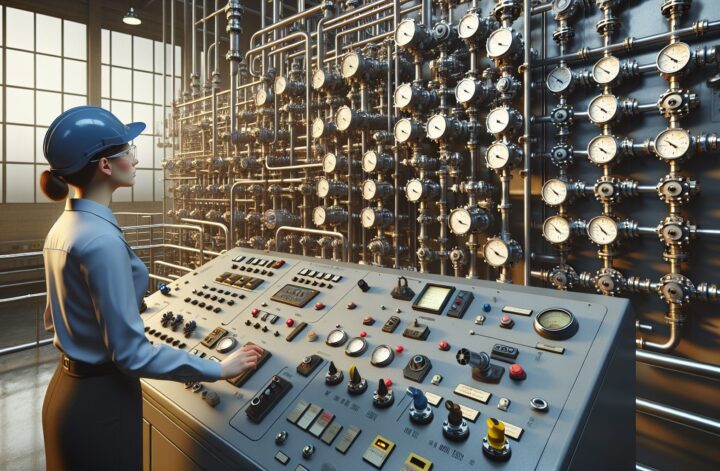Modern technological advancements have seen the shift from manual operation of industrial machinery to automated systems. One of the most significant transformations in the industrial sector is the automation of valve control. Valve control automation has revolutionized how businesses operate by enhancing efficiency, safety, and production capacity.
What is Valve Control Automation?
Valve control automation is the process of operating valves using automated systems to regulate the flow of fluids—be it gas, vapor, liquid, fluidized solids, or slurries. This technology is widely implemented across various industries, including oil and gas, power production, water and wastewater treatment, and chemical manufacturing. Valve control automation provides excellent accuracy and precision, which is integral in maintaining safety measures and improving machine performance^1^.
Importance of Valve Control Automation
The incorporation of automation into valve control systems has proved to be a game-changer in various ways. One of the critical factors is the increase in safety standards. Automation ensures that the operation of valves in high-risk environments is remote, limiting human exposure to potentially hazardous conditions.
Furthermore, valve automation provides significant improvements in efficiency and cost savings. Automated valves eliminate chances of human error and unnecessary downtimes associated with manual valve control. They allow for accurate real-time monitoring and diagnostics, enabling operators to detect and rectify any issues swiftly, thereby preventing potential extensive damage and expensive repairs.
Valve control automation also facilitates accuracy and precision, which is paramount in industries like the pharmaceutical sector where precise flow rate and volume are crucial for efficacy and safety. Programmed automation systems ensure exact measurement by perfectly adjusting the valve’s opening to the required level.
Implementing Valve Control Automation
The implementation of valve control automation involves several steps. First, it’s critical to conduct an analysis of the current control system in place. This analysis will determine the type of automated valve that will be most suitable for your specific application.
Next is the design stage, where you need to select the type of valve, actuator, and control system. The valve type will depend on the flow rate requirements for your specific application. The actuator is selected based on several factors, including power source availability and required operating speed. The control system should have features like real-time monitoring and diagnostics to enhance valve performance and longevity.
Finally, the installation and commissioning of the automated valve control system should be done by qualified technicians to ensure that it delivers optimum performance and function.
Challenges
Despite the numerous benefits offered by valve control automation, implementing these systems is not without its challenges. While upfront installation costs can be high, the return on investment over the long term with increased efficiency and reduced downtime can make this an affordable option.
Training staff to operate automated valve systems is another consideration. Although these systems are designed to be user-friendly, they can be complex and require a basic understanding of automated controls.
Lastly, maintaining an automated valve control system can be more complex than maintaining a manual system. However, considering the benefits that these systems bring, the additional maintenance requirements can be easily catered for.
Conclusion
In conclusion, while there may be challenges associated with the initial installation and running of automated valve systems, the benefits far outweigh these minor inconveniences. Implementing valve control automation can greatly enhance your operation’s efficiency, accuracy, safety, and cost-effectiveness. While the initial investment may be sizable, the long-term savings and benefits will indeed justify the expense[^2^].
[^2^]: ISA Interchange. (2021). Pros and Cons of Automated Valves. Retrieved on 24 May 2021 from Link




